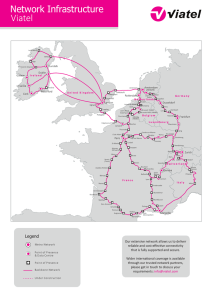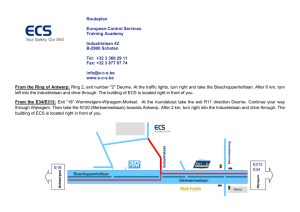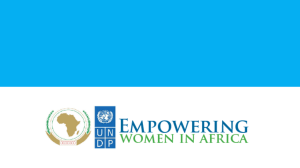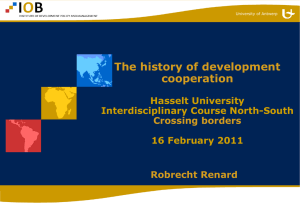Aid Effectiveness and Gender Equality by Nathalie Holvoet, IOB
advertisement
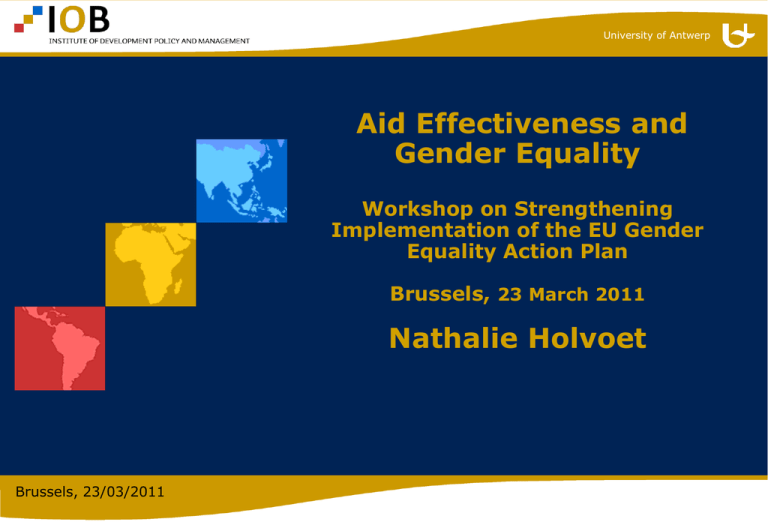
University of Antwerp Aid Effectiveness and Gender Equality Workshop on Strengthening Implementation of the EU Gender Equality Action Plan Brussels, 23 March 2011 Nathalie Holvoet Brussels, 23/03/2011 University of Antwerp Outline 1. Introduction 2. Key-principles of the Paris Declaration through a gender lens: opportunities and challenges 3. Entry points for increased gender-sensitivity 4. Making donor agencies more apt for gender-sensitive aid 5. Selected references Brussels, 23/03/2011 University of Antwerp 1. Introduction (1) shifts in aid modalities Paris Declaration: reform agenda around 5 key-principles ownership harmonisation alignment management for development results mutual accountability Brussels, 23/03/2011 University of Antwerp 1. Introduction (2) gender dimension in aid effectiveness agenda largely neglected in PD - absent from the 12 monitoring indicators - absent from major evaluation efforts slight improvement in AAA DAC Guiding Principles for Aid Effectiveness, Gender Equality and Women’s Empowerment (December 2008) (optional) assessment on 3 gender equality performance indicators in 2011 survey important efforts of ‘internal’ mobilisation network (gendernet) other mobilisation networks, including gender CSOs and networks Brussels, 23/03/2011 University of Antwerp 1. Introduction (3) no unequivocal position on expected effects of PD/AAA on gender equality & women’s empowerment → consensus: PD/AAA key-principles entail opportunities & challenges ↓ (see Holvoet and Inberg, 2009) Brussels, 23/03/2011 University of Antwerp 2. PD through a gender lens: opportunities & challenges (1) Key-principles Ownership Opportunities -↑ effective implementation of policies -most countries have national gender plans & apparatus Harmonisation -clarification of notions -reduction of confusion -joint analytical work -harmonise programming and funding for gender equality and empowerment Brussels, 23/03/2011 Challenges -misused as excuse to abandon responsibility -national gender policies often marginalised -national gender apparatus often weak -gender concerns sidelined to reach consensus -harmonisation towards the lower end -sectoral focus > horizontal issues University of Antwerp 2. PD through a gender lens: opportunities & challenges (2) Key-principles Alignment Brussels, 23/03/2011 Opportunities -↑ gender mainstreaming through influence and dialogue at the overall sector & macrolevel ( projects) -integration of gender perspective in BS entry points .policy dialogue .appraisal and monitoring of quality of national plans and processes and systems .capacity building .M&E exercises (joint reviews, etc.) -room for ‘gender equality’ & empowerment projects (agenda-setting track) in portfolio approaches Challenges -uncritical alignment to gender-blind policies & processes -curtailing of donor’s agenda-setting ‘gender equality’ & ‘empowerment’ track University of Antwerp 2. PD through a gender lens: opportunities & challenges (3) Keyprinciples Management for development results Opportunities -collection of evidence about results -focus on targets diminishes policy evaporation -analysis of failing development results could identify genderblindness as a causal factor -similarities among resultsoriented budgeting and gender budgeting Mutual -assessment of genderaccountability sensitivity of donor practices -participation of non-state gender actors in accountability and review exercises -use of gender budgeting as accountability instrument Brussels, 23/03/2011 Challenges -’gender equality’ and ‘women’s empowerment’ often not captured in targets -indicatorism and lack of analysis of failing results -‘management for results’ often misinterpreted as ‘management by results’ -reductionist focus on gender equality in education -lack of (use) of sex-disaggregated data -accountability reduced to a narrow interpretation of aid effectiveness -absence of a strong gender demand side among non-state actors University of Antwerp 3. Entry points for increased gender-sensitivity: overview (1) Entry points Suggestions for gendersensitivity joint ex-ante appraisal of quality of national and sector policies - Country Gender Profile (content) - Gender Equality Screening Checklist - Gender Equality Policy Marker joint ex-ante appraisal of quality of institutional apparatus for policymaking, implementation, budgeting, monitoring and evaluation - Country Gender Profile (institutional apparatus) - Gender Equality Screening Checklist mapping of national non-government actors (including CSOs, research institutes, parliament) - Country Gender Profile (nongovernment actors) Brussels, 23/03/2011 University of Antwerp 3. Entry points for increased gender-sensitivity: overview (2) Entry points Suggestions for gender-sensitivity joint capacity building of national actors (government and nongovernment) - inclusion of gender dimension in existing capacity building efforts - CD of national/ sector government gender apparatus - CD of national (gender) demand side joint monitoring, review and policy dialogue - gender coordination/working group - gender indicators in PAFs and joint (sector) reviews - discuss gender issues in policy dialogue joint evaluation - gender dimension in (joint) evaluative exercises (dependent & independent variable) (joint) well-aligned projects - aimed at GEWE Brussels, 23/03/2011 University of Antwerp 3. Entry points for increased gender-sensitivity (3) joint ex-ante appraisal of quality of national and sector policies Country Gender Profile (compulsory in next generation of CSP and NIP) (GA, I.3.4.3) - verification of integration of gender dimension in national/sector policy diagnosis, selection of priorities, budgeting, implementation, monitoring and evaluation - verification of integration of gender policies in national/sector development policies and plans - useful format: OECD/DAC gender performance ‘ownership’ indicator Gender Equality Screening Checklist (compulsory for new projects since 2010) Application of the Gender Equality Policy Marker (compulsory) (GA, A.6.2) - G-0: gender equality is not targeted - G-1: gender equality is a significant objective - G-2: gender equality is a principle objective Brussels, 23/03/2011 University of Antwerp 3. Entry points for increased gender-sensitivity (4) joint ex-ante appraisal of quality of institutional apparatus Country Gender Profile - verification of gender sensitivity of existing processes and institutional apparatus for policy-making, implementation, budgeting, M&E - verification of involvement of existing national/ sector gender apparatus in different stages - verification of presence/ quality of gender apparatus - useful formats: OECD/DAC gender performance ‘managing for results’ and ‘mutual accountability’ indicator Gender Equality Screening Checklist Brussels, 23/03/2011 University of Antwerp 3. Entry points for increased gender-sensitivity (5) mapping of national non-government actors Country Gender Profile - mapping and assessment of the capacity of national gender demand side - assessment of involvement national gender demand side in PRSP and sector program processes - useful format: OECD/DAC gender performance ‘mutual accountability’ indicator joint capacity building of national actors inclusion of gender component in existing capacity building efforts capacity building of national/sector government gender apparatus and of national (gender) demand side (GA, A.5.2) useful tool/instrument: gender responsive budgeting Brussels, 23/03/2011 University of Antwerp 3. Entry points for increased gender-sensitivity (6) joint monitoring, review and policy dialogue gender coordination/working group (GA, A.3.3) -> division of labour for participation in sector, macro-economic and budget working groups inclusion of gender process and results indicators in (donor) PAFs (GA, A.4.1) -> gender disaggregated indicators in variable tranches inclusion of gender issues in joint (sector) reviews (GA, A.3.4) and policy dialogue (GA, A.3.2, GA, A.4.2) joint evaluation inclusion of gender dimension in various (joint) evaluative exercises (public expenditure surveys, poverty and social impact assessment, poverty impact assessment, evaluation of Paris Declaration) gender as dependent and independent variable (joint) well-aligned projects in portfolio approaches inclusion of projects which are oriented towards specific target groups/ specific objectives, including women’s empowerment Brussels, 23/03/2011 University of Antwerp 4. Making donor agencies more apt for gendersensitive aid (1) Commitment EU Plan of Action on Gender Equality and Women’s Empowerment in Development (GA, A.1.1) Capacity elaboration of tools and instruments for gender-sensitivity gender training of EU staff (A2b.1-6) training of gender focal points (GA, A.2b.7) GRB tools and approaches are useful: bridging function between gender experts and PFM/ macroeconomic/ budget support experts AND broaden mandates of gender focal points beyond the project modality locate gender focal points hierarchically higher increase their leverage Brussels, 23/03/2011 University of Antwerp 4. Making donor agencies more apt for gendersensitive aid (2) Incentives need for clear-cut system of sticks and carrots -> - inclusion of gender indicators in PAF of donor’s performance - use of indicators & targets in the EU Gender Action Plan international incentives - G-marker - DAC peer review Brussels, 23/03/2011 University of Antwerp 5. Selected references • Holvoet, N. (2010) “Gender equality and new aid modalities: is love really in the air?” European journal of development research 22: 97-117. • Holvoet, N. and L. Inberg (2009) “Paris Declaration and Accra Agenda for Action through a gender lens: an international perspective and the case of the Dutch Development Cooperation” pp 1-25 in DPRN, CIDIN, HIVOS, Oxfam Novib, Ministerie Buitenlandse Zaken Nederland. Papers Expert Meeting ‘On track with Gender’(May 29th 2009). DPRN, CIDIN, HIVOS, OXFAM Novib, Ministerie van Buitenlandse Zaken. • Holvoet, N. and L. Inberg (2009) “The Gender Equality Policy Marker within Europeaid”, Internal discussion paper on how to apply the G-marker in new aid modalities, Institute of Development Policy and Management, University of Antwerp. • Holvoet, N. with support of L. Inberg (2009) “How to Apply Gender Budgeting to Europeaid”, Institute of Development Policy and Management, University of Antwerp. • Holvoet, N. (2006) EC Briefing Note on Gender Budgeting, Brussels, European Commission. Brussels, 23/03/2011 University of Antwerp Thank you! nathalie.holvoet@ua.ac.be Brussels, 23/03/2011 University of Antwerp Annex: tools for integrating gender dimension in different phases of GBS cycle Brussels, 23/03/2011


